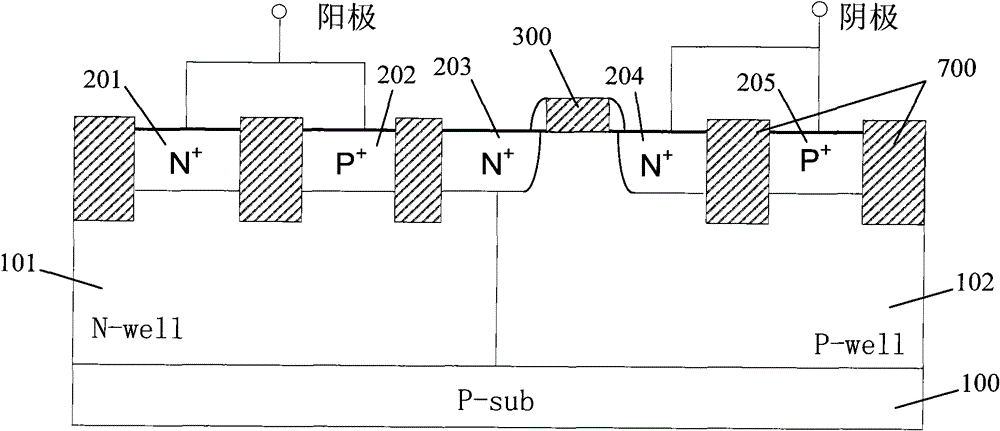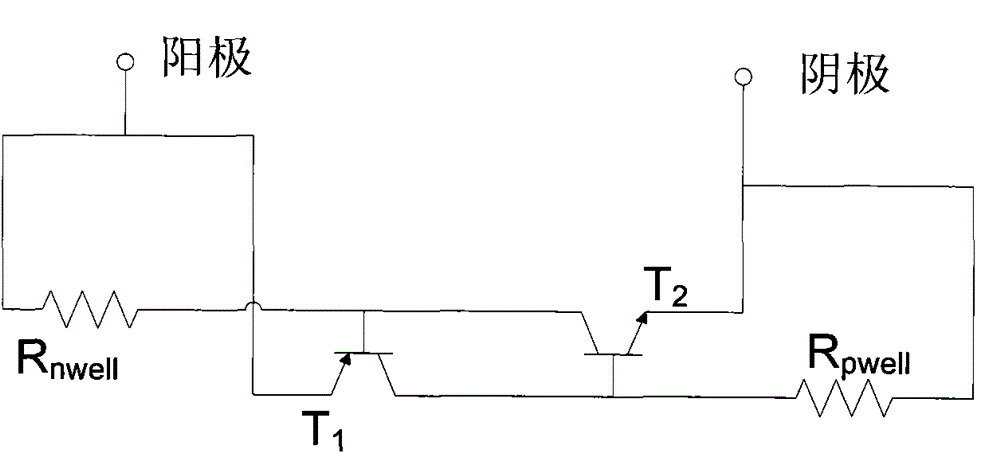Gate driving thyristor circuit and electrostatic protection circuit
An electrostatic protection and thyristor technology, which is applied in the field of integrated circuit electrostatic protection circuit design, can solve problems such as the inability to meet the long-pulse width ESD electrostatic pulse discharge requirements, achieve strong electrostatic discharge capabilities, and promote the effect of triggering conduction
- Summary
- Abstract
- Description
- Claims
- Application Information
AI Technical Summary
Problems solved by technology
Method used
Image
Examples
Embodiment Construction
[0033] The existing thyristor trigger voltage adjustment circuit utilizes the coupling effect of the RC coupling loop to couple the potential of the anode to the control grid of the gate-controlled thyristor, thereby reducing the thyristor trigger voltage. However, since the coupling effect is not continuous, the potential on the control grid will quickly hysteresis for a long-pulse ESD pulse, and the effect of reducing the trigger voltage of the thyristor is limited. Therefore, it does not meet the requirement of long-term electrostatic discharge. In the gate-driven thyristor circuit provided by the present invention, a forward-connected diode path is formed between the anode and the control gate and between the control gate and the base (P well) of the parasitic NPN transistor in the NMOS transistor, wherein the base passes through the P well The parasitic internal resistance of is connected to the cathode of the thyristor. Therefore, as long as the potential on the anode i...
PUM
 Login to View More
Login to View More Abstract
Description
Claims
Application Information
 Login to View More
Login to View More - R&D
- Intellectual Property
- Life Sciences
- Materials
- Tech Scout
- Unparalleled Data Quality
- Higher Quality Content
- 60% Fewer Hallucinations
Browse by: Latest US Patents, China's latest patents, Technical Efficacy Thesaurus, Application Domain, Technology Topic, Popular Technical Reports.
© 2025 PatSnap. All rights reserved.Legal|Privacy policy|Modern Slavery Act Transparency Statement|Sitemap|About US| Contact US: help@patsnap.com



